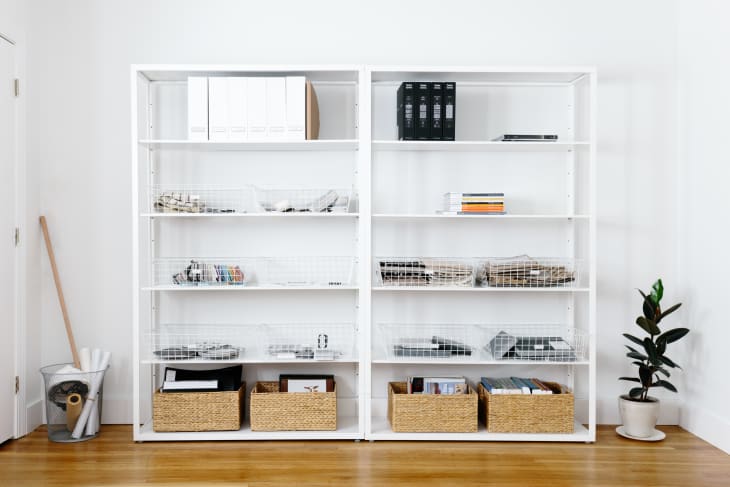5 Ways to Take Your Home Organization to the Next Level

Organizing your home can be an excellent source of self-care. Taking on a hands-on organizing project does more than make your daily life flow more smoothly. The act itself can be meditative — helping to ground you in the present and give your mind a chance to wander while your feet are firmly planted on the Earth. And when you combine the benefits of the act with the organized result, your weekend project can usher you from a spiral of helplessness to a state of calm.
If you’re one of those people who experience these kinds of far-reaching rewards with something as simple as adding a bit of order to your space, you might find yourself, two years into a pandemic, looking for even more things to organize.
Usually these types of next-level organization projects involve not just neatened up spaces, but creating support for organization systems that are sustainable long term.
Here are some ways to take even your already-organized spaces up a notch, to a deeper level:
After decluttering a drawer, compartmentalize it.
You’ve sorted through your socks and undies and narrowed down your collection to the best and the most useful. But to keep those perfectly KonMaried garments in order going forward and maybe even perpetually, you might consider adding drawer organizers to your dresser drawers. This set of four drawer organizers keeps bras, panties, and socks perfectly filed.
After you create “zones,” label shelves and containers.
Putting like with like, whether it’s craft or baking supplies, is a basic building block of organization. But if these zones aren’t maintained, disorder creeps back in, especially if others in the household are using the same spaces and items. Labeling takes most of the effort out of putting things back where they belong. I already have a label maker, but if I were in the market for another, I’d get a wireless label maker that connects to your phone or a super low-tech label maker like my mother had when I was a kid.
After paring down collections, sort by color or size.
A thinned down collection of books, clothing, art supplies, or whatever else you keep and store is the first step of an organized and accessible assortment. The next level is sorting your collection by size or color. This adds an element of both visual order and inherent organization to your collection. Similar to the way in which labels dictate where items get put away, putting things in color- or size-order directs people to put items back in exactly the right spot. This direction sustains your system. Some of my favorite ways to implement this are storing clothing in ascending or descending length or putting my shirts in my drawer in rainbow order. Books classified by color are not only delightful to look at but are surprisingly easy to locate.
After clearing everyday clutter off your surfaces, remove more permanent items from surfaces for good.
We all have stuff that ends up on our counters that doesn’t belong there, like the paper piles in the kitchen or on our desks. If you’ve gotten these kinds of piles under control, either by placing inboxes strategically on these surfaces or by performing a daily sweep of items that don’t belong, there’s a way to take that clean-slate feeling even further: See what staples you can remove from your flat surfaces once and for all. Maybe you can put a small appliance or your knives in a cabinet or drawer, or maybe that notebook you leave out on your desk could be slipped next to some books on a shelf. Try to only leave out what truly adds beauty, meaning, or function. However you make it happen, clearing off surfaces for good helps the whole room — and you — breathe.
After deleting unused apps from your phone, put rarely used ones “away.”
Once you’ve combed through your phone and trashed all the apps you don’t use, go to the next level and relegate the apps you still need but don’t use daily, to app folders on their own screen. Examples of apps to move to folders include your fast food apps or specialized photography apps for retouching, for instance. If you have iOS 14, you can put the App Library to use. Or try something similar for Android. Keeping only often-used apps in sight on your phone screens keeps you from being visually bombarded every time you pick up your phone.